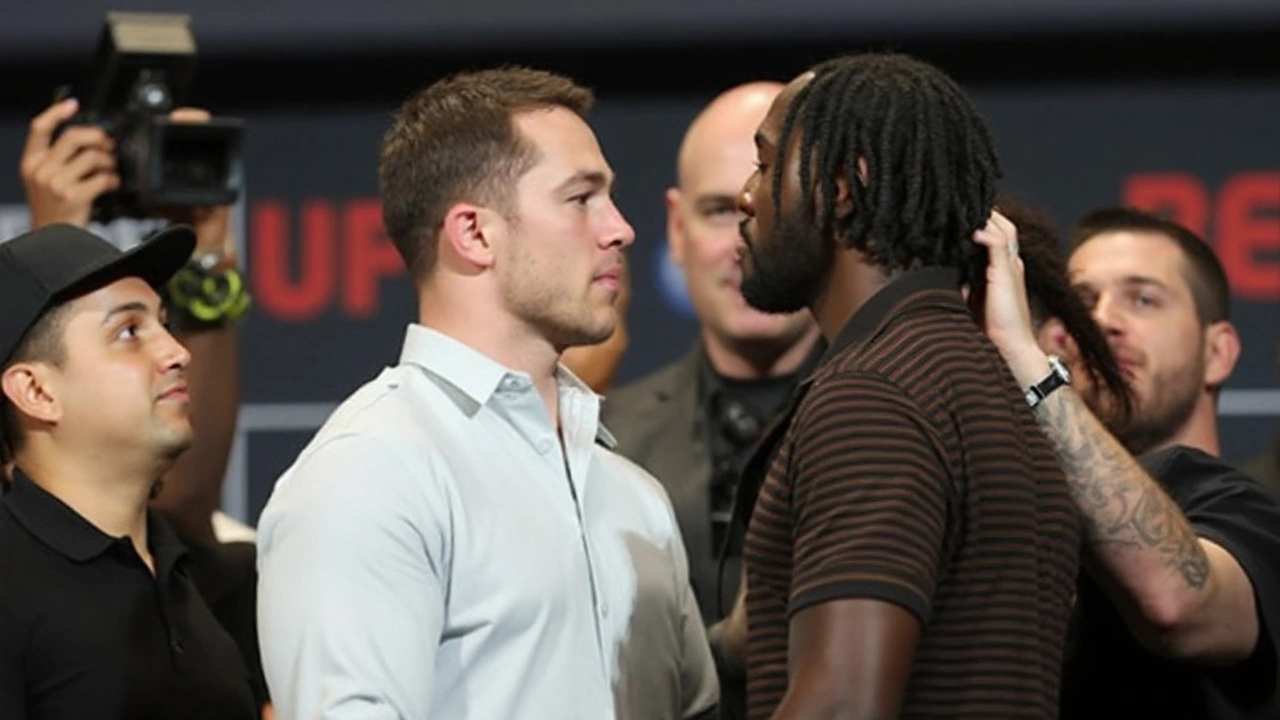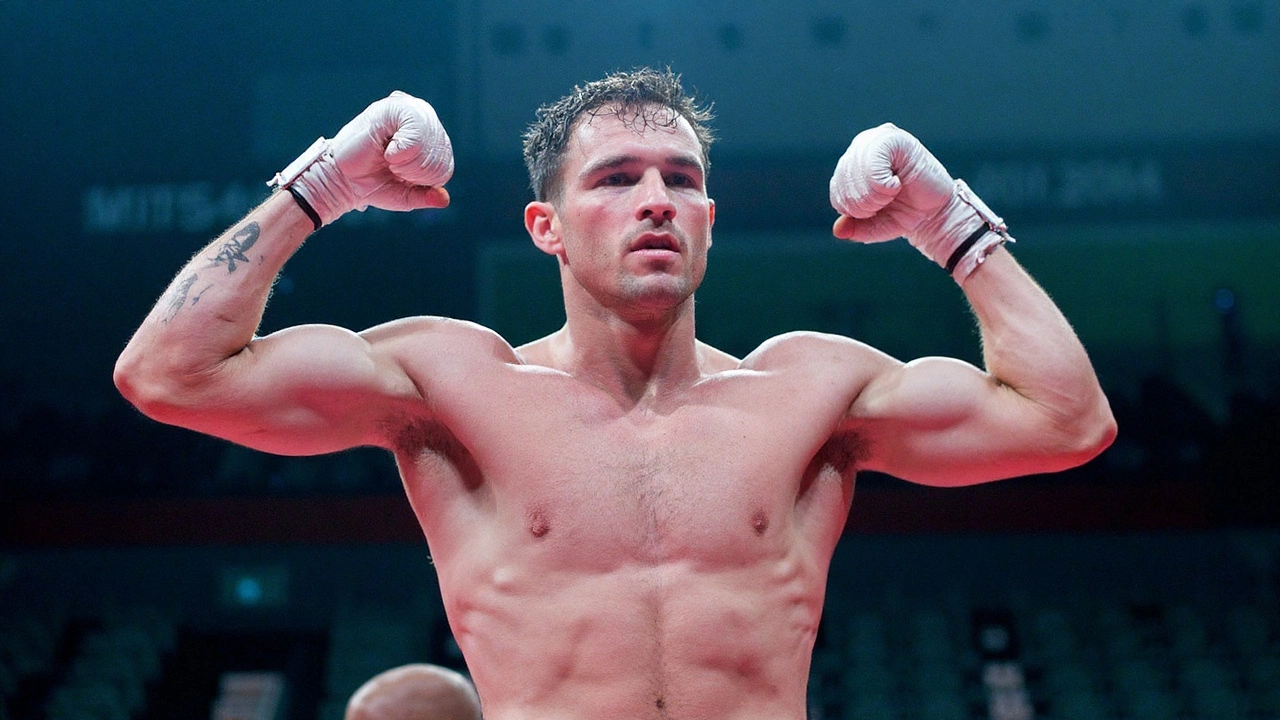Canelo Alvarez vs Terence Crawford: Michael Conlan backs 'Bud' after tense face-off

- Sep, 6 2025
- 0 Comments
- Finnegan Callaghan
Conlan’s call flips the script
A stare can change a prediction. Irish contender Michael Conlan says the face-off between Canelo Alvarez and Terence Crawford shifted his pick toward Crawford in a fight most view as a bridge too far. That single moment, he argues, told him enough about composure, confidence, and intent to back the smaller man to spring an upset at 168 pounds.
On paper, the move is audacious. Crawford made his name at 135, unified at 140, and became undisputed at 147 with a clinic against Errol Spence Jr. He has never fought at super middleweight. Alvarez, by contrast, rules the division, has carried his power up the scales, and is used to hard, physical nights with natural 168-pounders. The size gap is real. So why are smart boxing people entertaining the idea that Crawford could pull this off?
Because the sport has short memories and long receipts. Fans still remember Canelo’s tidy dismantling of Jermell Charlo, a smaller man who jumped two divisions and couldn’t dent the champion. They also remember Canelo’s loss to the bigger, rangier Dmitry Bivol at 175, a reminder that weight and dimensions can blunt even elite timing. Crawford sits somewhere between those cases—smaller than Canelo, yes, but sharper, meaner, and more adaptable than most who dare move up.
Conlan’s read leans into a fighter’s instinct. Boxers study body language in silence: who breaks eye contact first, who shifts their stance, who smirks when the other flinches. It’s not science, but among fighters it’s a language. Conlan believes he heard Crawford speaking fluently in that moment—calm, unbothered, calculating. That’s a signal some in the gym trust more than any tale of reach and rehydration.
There’s heavy history here. Sugar Ray Leonard came up from welterweight to beat Marvin Hagler in 1987, winning on angles and activity. Henry Armstrong terrorized divisions he had no business terrorizing. Manny Pacquiao dragged speed and spite across weight classes for a decade. But there’s a flip side: Amir Khan leapt toward Canelo and got timed and iced. Kell Brook jumped to meet Gennadiy Golovkin and walked into fractures. Size is a taxman; sometimes it collects late, sometimes early.
For Crawford, the question isn’t just pounds—it’s inheritance. Can his timing carry? Will his power matter against Canelo’s neck-of-an-anvil chin? Can he keep that cold patience when the counter windows close faster at 168 than at 147? His advantage is that he solves problems mid-fight, and he solves them cruelly. The danger is that bigger men give you fewer chances to test a theory.

What the fight would look like—if it happens
There’s no date, no venue, and no firm terms. That hasn’t stopped the arguments. The split is familiar: Team Size says Canelo by stubborn, steady pressure and shots that change the tone early. Team Skill says Crawford by rhythm control, feints, body positioning, and a pace that makes Canelo work when he least wants to.
Alvarez at 168 is a patient bully. He guards high, rolls at mid-range, and chops the body to drag opponents into late rounds where he cashes his investments. When he’s flowing, he turns counters into statements. But he doesn’t love chasing speed. Opponents who won’t stand in his preferred pocket can make him look methodical.
Crawford is the opposite type: a switch-hitter who steals range with foot feints and hands traps, slides into southpaw to take away a right hand, and punishes overreaches. He sets traps and then sets traps for those traps. He also doesn’t mind starting slow if it buys him the blueprint. At welterweight, once he reads you, the fight doesn’t drift—he does the pulling.
Those styles produce a narrow path for each man, and each path runs through risk. Here are the pressure points that would decide it:
- Size and durability: Canelo’s punch resistance at 168 is proven. Crawford’s is untested there. One clean counter downstairs can make a slick fight suddenly static.
- Range control: Crawford must win the first step—get in, score, exit. If Canelo parks him on the ropes where roll-and-rip works, the rounds lean red.
- Pace negotiation: Canelo likes to work in chosen moments. A high-feint, high-jab rhythm from Crawford forces him to reset. If the ref tolerates clinch breaks and resets, that helps the mover.
- Body work: Canelo’s investment to the ribs can change Crawford’s legs. But Crawford’s own body shots, especially from southpaw, could discourage Canelo’s advance.
- Counter windows: Crawford lives off mistakes; Canelo makes fewer than most. Whoever wins the feint battle will create the cleaner counters for the judges to see.
- Judging optics: Steady thuds vs. clean single counters. In close rounds, who lands the eye-catching shot could swing scorecards.
Conlan’s pick cuts against the weight of history only a little. Upsets across divisions usually require one of two things: the smaller man’s speed and judgment to be extraordinary, or the bigger man to age at the wrong moment. Crawford checks the first box most nights. Which raises the next debate—where is Canelo on his curve?
Recent form offers mixed evidence. Alvarez schooled Jermell Charlo and handled rugged opposition at 168 with control, but he looked human at 175 against Bivol and has had stretches where he fought in gears rather than overdrive. He still carries the thud that changes behavior and the craft that keeps him safe. It’s just that the margins against an elite technician shrink fast if the feet slow even a little.
Business matters lurk in the background. To get this over the line, teams would have to settle on gloves, ring size, rehydration rules, and broadcast politics. Bigger ring, bigger help for the mover. Tighter rehydration, bigger help for the smaller man. Neither side will want to hand the other a lever that big. That haggling can tilt a fight long before the first bell.
There’s also the weight build. Crawford can’t just arrive heavier; he has to arrive functional. Add too much too fast, and he risks losing snap, timing, or gas. Skimp on size, and he’ll feel Canelo’s counters through the guard. The camp would revolve around targeted strength work, smart calories, and sparring with thick, compact punchers who can close distance and test balance.
Fans are split for good reason. If you watched Crawford carve up Spence, you saw a fighter switch through styles like gears—measured early, vicious late. If you watched Canelo break elite men down with body shots and shoulder rolls, you saw a champion who makes talent look ordinary. Put those two in a ring and the winner might be the one who convinces the other to fight at the wrong range for just six minutes across 36.
Where does Conlan fit? He’s not the first active fighter to trust a face-off reveal. Boxers are trained to notice tells the rest of us miss, and he believes he saw calm versus calculation, and calculation beat assuredness. His call won’t settle the debate, but it adds a fighter’s eye to a conversation driven by highlight reels and BoxRec lines.
One more wrinkle: legacy math. Crawford chasing a champion two divisions up is the kind of risk that, if it pays off, vaults him into the short list of era-definers. For Canelo, taking on a smaller, prime maestro who many believe can out-think him is a different kind of risk: the kind that tests his timing, not just his toughness. If it happens, the judges won’t just be scoring punches—they’ll be scoring arguments about what matters most in a ring: mass or mastery.
For now, the fight lives at the intersection of buzz and negotiation. Conlan’s pick sparks the pot, the face-off fuels the discourse, and the sport waits to see if the men who locked eyes decide to lock horns. If they do, expect a week of nostalgia—Leonard-Hagler comparisons, weight-room whispers, and training-camp peeks—followed by 12 rounds where one bad read might matter more than 20 good minutes.